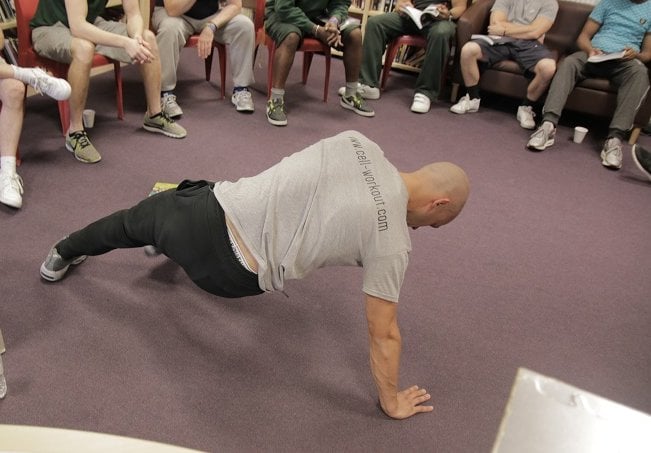
Making meaningful work – and measuring it
Helping prisoners devise and perform a piece of children’s theatre for their families may help reduce re-offending rates, but Selina Busby questions whether the evaluation of such projects is as effective as it should be.
My first job in education as a newly qualified drama teacher was in a Category A male prison. I had eight students: two were learning to read, one was doing an Open University course in English Literature, four were doing a GCSE in English language, and one was placed in the room as there was nothing else for him to do.
The criminal justice system is broken and arts practitioners need to provide evidence that there is a different way to do things
My mission was to teach each of them to recite a Shakespearean soliloquy. After the first session, I swore I would never go back, but after the third I had a plan and over the next five weeks we played, laughed, talked about politics and prison life. And in week six each man rapped or sang the mandatory soliloquy.
Links with families
Since then, as part of my work at the Royal Central School of Speech and Drama in London I have worked on a children’s play project that has run for ten years in a number of UK prisons and twice in the Corradino Correctional Facility in Malta. Usually the project involves six Applied Drama students working on a residency in a prison with between 18 and 25 residents.
The project in the UK focuses on residents who are new to this facility and who are all fathers with young-ish children. The men volunteer to work on a theatre project over a two-week period, in which they devise and perform a piece of children’s theatre. At the end of the residency, the children, partners and extended families of the participants are invited into the prison for a family day, where they can see the performance and participate in an extended, and informal, visit.
Maintaining contact with their children is often difficult for adults in prison. So, creating a drama project where fathers devise and perform children’s theatre for their own families to see on a visit gives them access to creativity. It may help maintain contact and can enable the parents to give something to their families. In the process, this can help maintain links and maybe reduce re-offending.
There are statistics that demonstrate re-offending can be linked to housing and employment issues, and that if male offenders have maintained links with their families they are more likely to have housing on release, and therefore more job opportunities and less likely to re-offend. This makes the project an easy sell to governors, even though the idea of allowing drama students within their walls is one fraught with complications.
The work is not for everyone and there are many challenges. Often the work is not seen – it’s invisible to the public, or it’s visible in the worst possible ways when the popular press misconstrues the work, or when a company uses its offender participants as a way to tick widening diversity and community value boxes.
It’s complicated and hard work. Getting a six-foot sea monster puppet through security is not easy. Often your actors and crew don’t get to go home after rehearsals but have to go back to the wing – and that’s hard to see. Some students don’t cope when the gates and doors close behind them, some struggle with the emotional difficulties of working in secure settings, as do some trained arts professionals. You never know how people might react once ‘inside’.
A more meaningful evaluation
The criminal justice system is broken and that’s why arts practitioners need to provide evidence that there is a different way to do things – a way that works, reduces offending, keeps communities safe and values human beings. And not just with a questionnaire and a tick-box evaluation.
Research and evaluation methods need to be deeply embedded into our practices in a meaningful way. That means our participants should be our co-researchers and co-creators from the beginning of the planning stage through until the end of the evaluation process.
It also means that the artform – theatre, visual art, creative writing, dance, music – is part of the evidence collection and dissemination. Theatre or arts practice need to be the focus of the work created (obviously), but it needs to be built into our evaluations, used as a method for data collection and in our communications to policy-makers and the public.
If we want to change the system, we need to demonstrate our findings in more meaningful and accessible ways than an evaluation report with some statistics, pie charts and a few quotes. Taking drama students into prisons to make children’s theatre alongside the participants as equal members of the production team, and to work with students to find better ways to document and evaluate the impact of this work, is a small contribution to the drive to shift thinking about our current practices.
But this is just half the challenge. There’s the need to convince the policy-makers, the general public and the non-believers that the arts have value beyond our mainstream cultural arts institutions and organisations. While celebrating the individuals who have established careers in this specialised field, and to encourage more to do so. Is it a risk to take students into prisons to make theatre? Maybe, but it’s one worth taking.
Selina Busby is Course leader of the MA Applied Theatre: Theatre and the Criminal Justice System at the Royal Central School of Speech and Drama.
www.cssd.ac.uk
Join the Discussion
You must be logged in to post a comment.